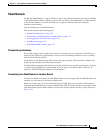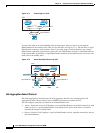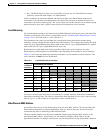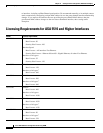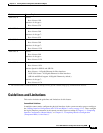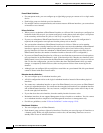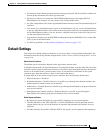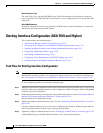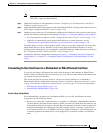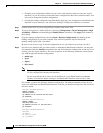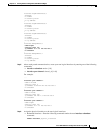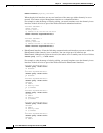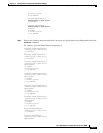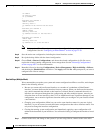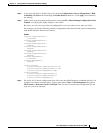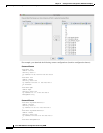
12-13
Cisco ASA 5500 Series Configuration Guide using ASDM
Chapter 12 Starting Interface Configuration (ASA 5510 and Higher)
Starting Interface Configuration (ASA 5510 and Higher)
Note You cannot use interfaces on the 4GE SSM, including the integrated 4GE SSM in slot 1 on the
ASA 5550, as part of an EtherChannel.
Step 5 (Optional) Configure VLAN subinterfaces. See the “Configuring VLAN Subinterfaces and 802.1Q
Trunking” section on page 12-35.
Step 6 (Optional) Enable jumbo frame support on the ASA 5580 and 5585-X according to the “Enabling Jumbo
Frame Support (Supported Models)” section on page 12-38.
Step 7 (Multiple context mode only) To complete the configuration of interfaces in the system execution space,
perform the following tasks that are documented in Chapter 11, “Configuring Multiple Context Mode”:
• To assign interfaces to contexts, see the “Configuring a Security Context” section on page 11-19.
• (Optional) To automatically assign unique MAC addresses to context interfaces, see the
“Automatically Assigning MAC Addresses to Context Interfaces” section on page 11-20.
The MAC address is used to classify packets within a context. If you share an interface, but do not have
unique MAC addresses for the interface in each context, then the destination IP address is used to
classify packets. Alternatively, you can manually assign MAC addresses within the context according to
the “Configuring the MAC Address and MTU” section on page 14-12.
Step 8 Complete the interface configuration according to Chapter 14, “Completing Interface Configuration
(Routed Mode),” or Chapter 15, “Completing Interface Configuration (Transparent Mode, 8.4 and
Later).”
Converting In-Use Interfaces to a Redundant or EtherChannel Interface
If you have an existing configuration and want to take advantage of the redundant or EtherChannel
interface feature for interfaces that are currently in use, you will have some amount of downtime when
you convert to the logical interfaces.
This section provides an overview of how to convert your existing interfaces to a redundant or
EtherChannel interface with minimal downtime. See the “Configuring a Redundant Interface” section
on page 12-26 and the “Configuring an EtherChannel” section on page 12-29 fore more information.
• Detailed Steps (Single Mode), page 12-13
• Detailed Steps (Multiple Mode), page 12-18
Detailed Steps (Single Mode)
We recommend that you update your configuration offline as a text file, and reimport the whole
configuration for the following reasons:
• Because you cannot add a named interface as a member of a redundant or EtherChannel interface,
you must remove the name from the interface. When you remove the name from the interface, any
command that referred to that name is deleted. Because commands that refer to interface names are
widespread throughout the configuration and affect multiple features, removing a name from an
in-use interface at the CLI or in ASDM would cause significant damage to your configuration, not
to mention significant downtime while you reconfigure all your features around a new interface
name.



